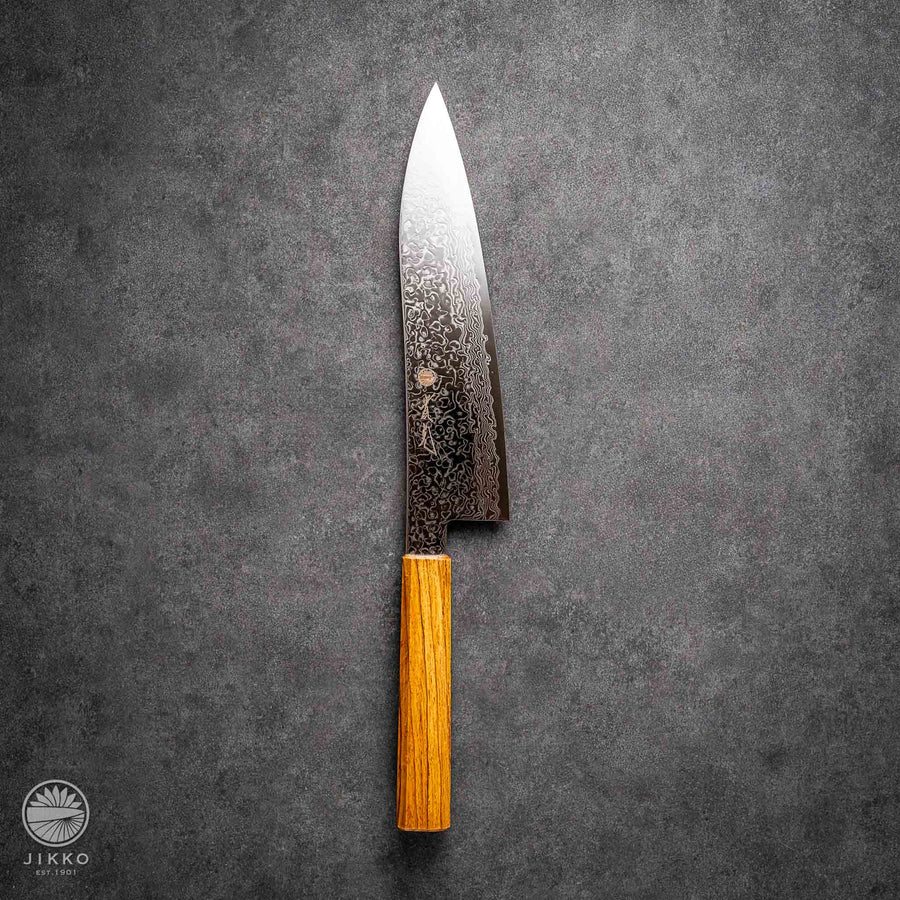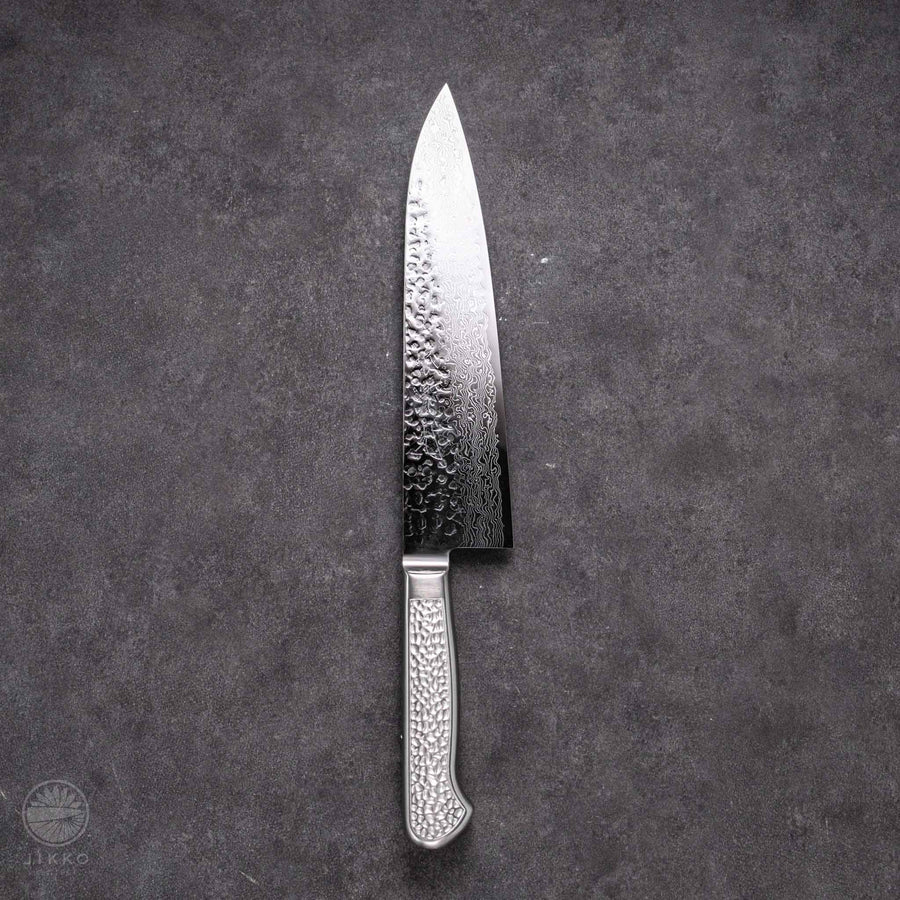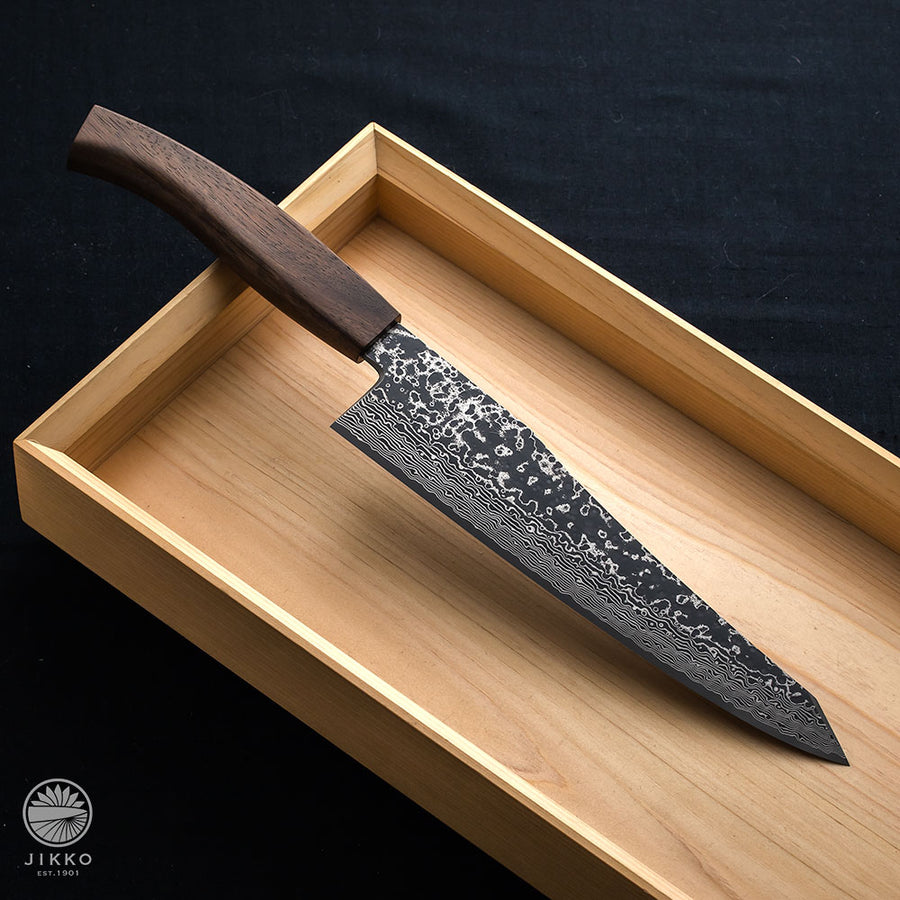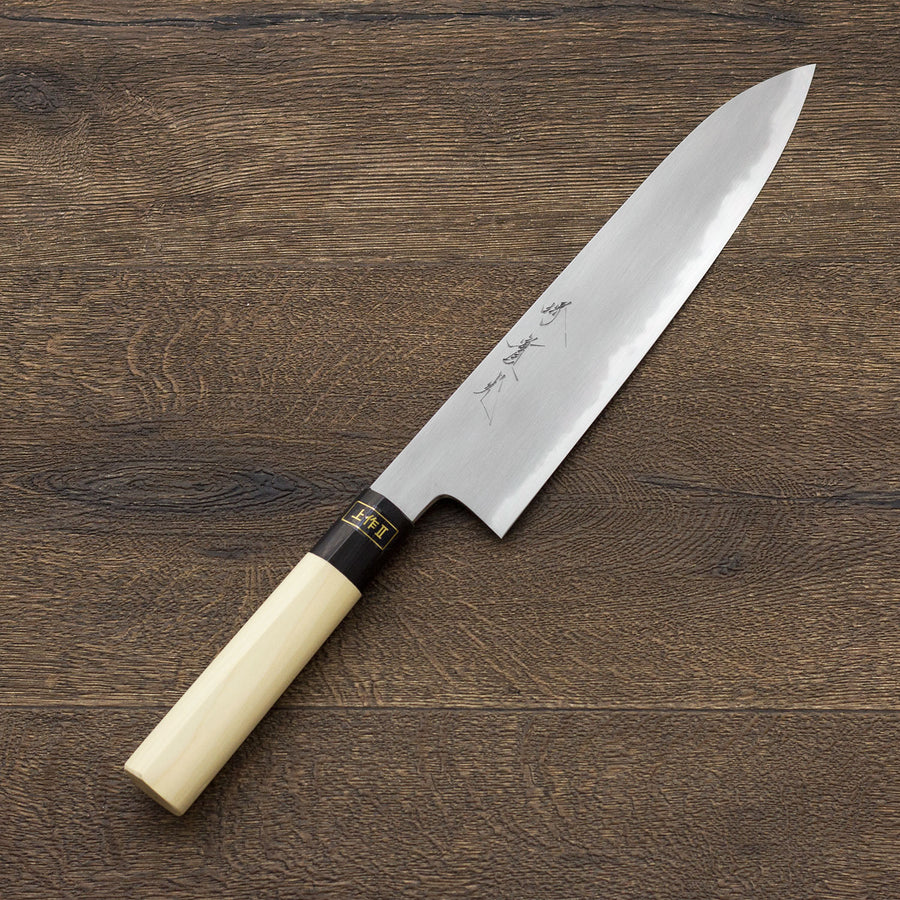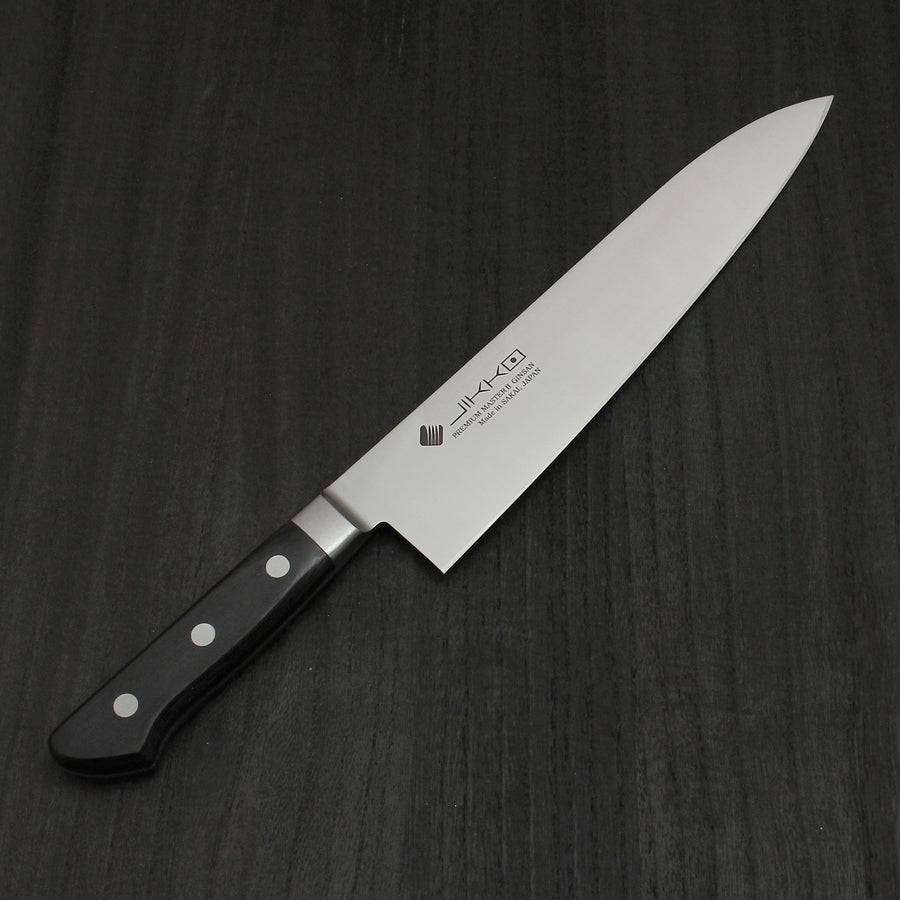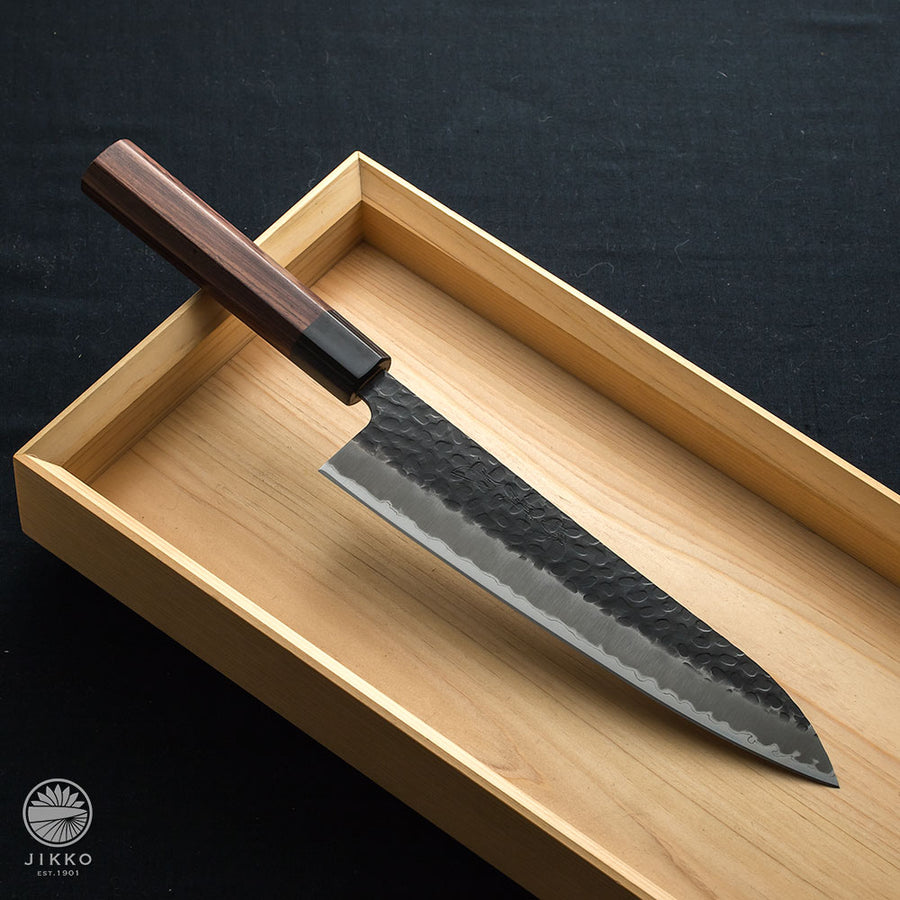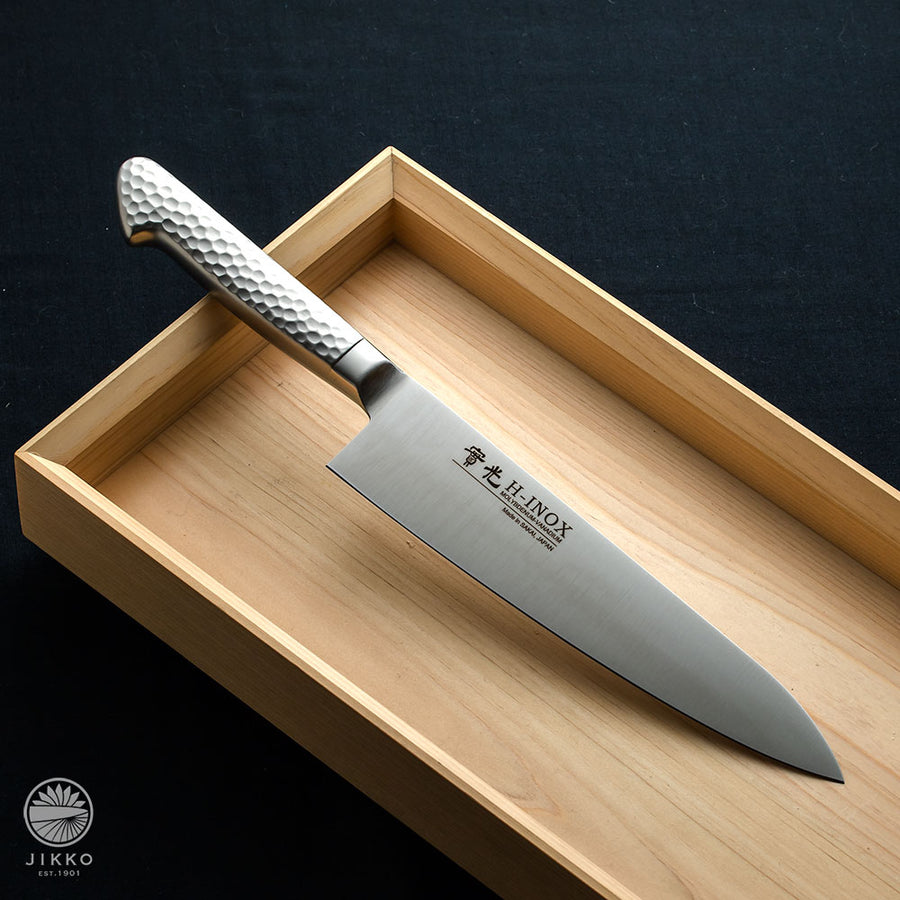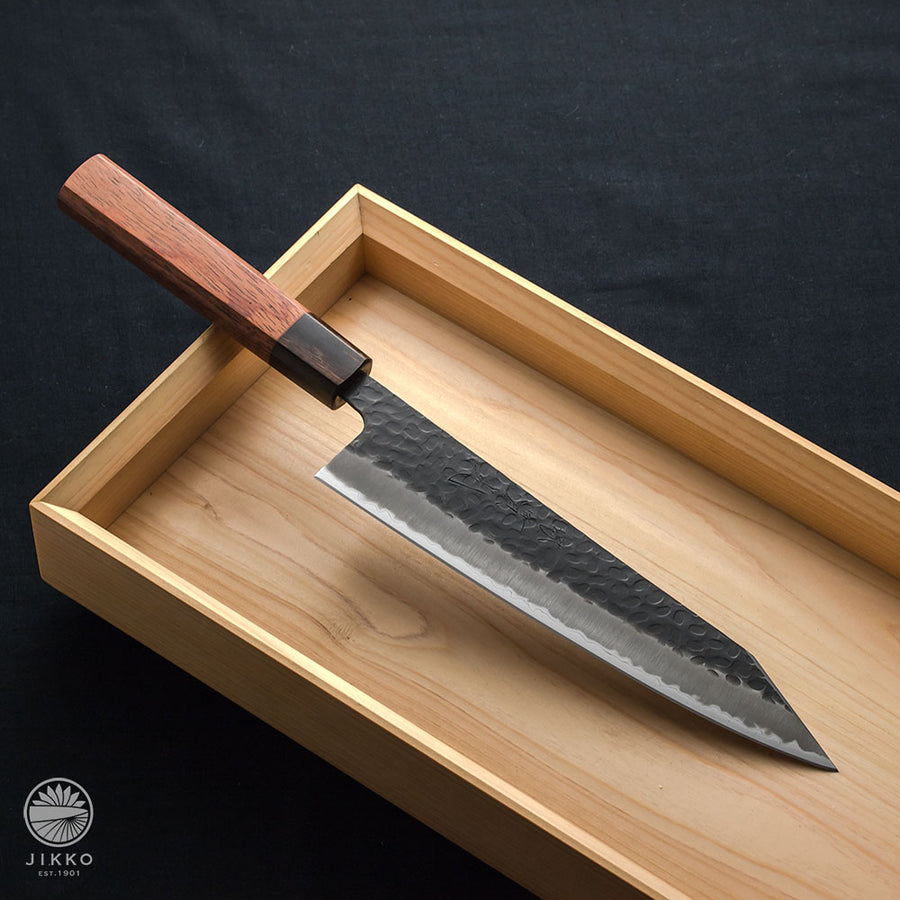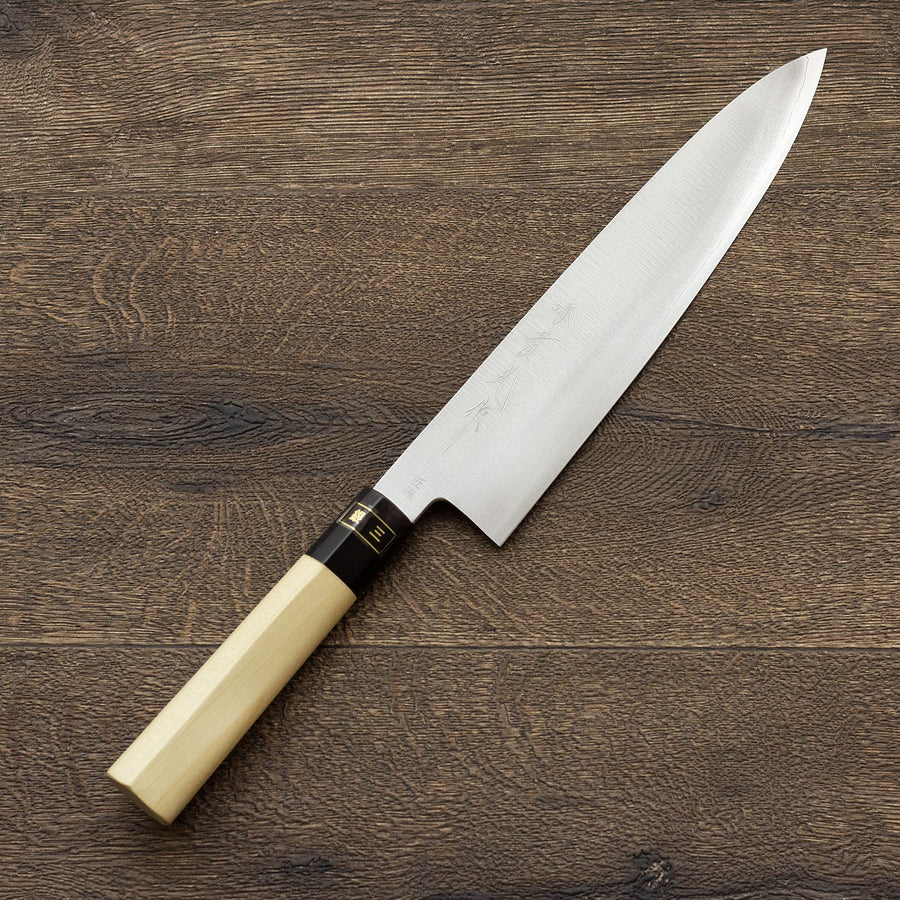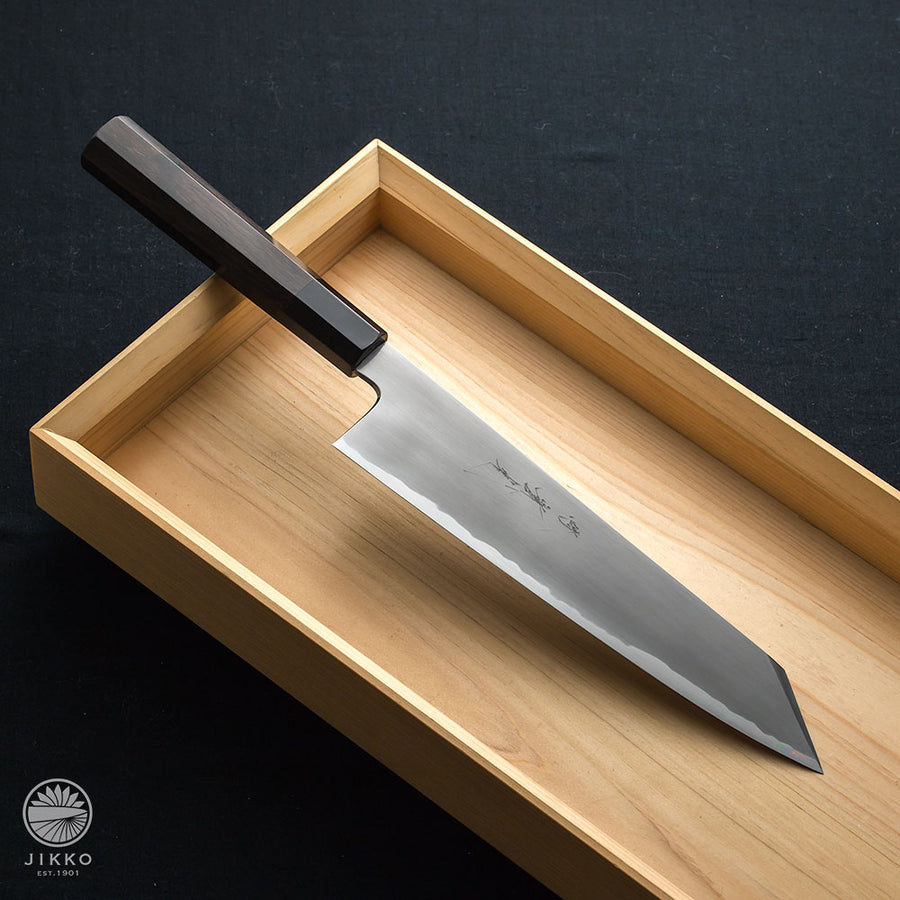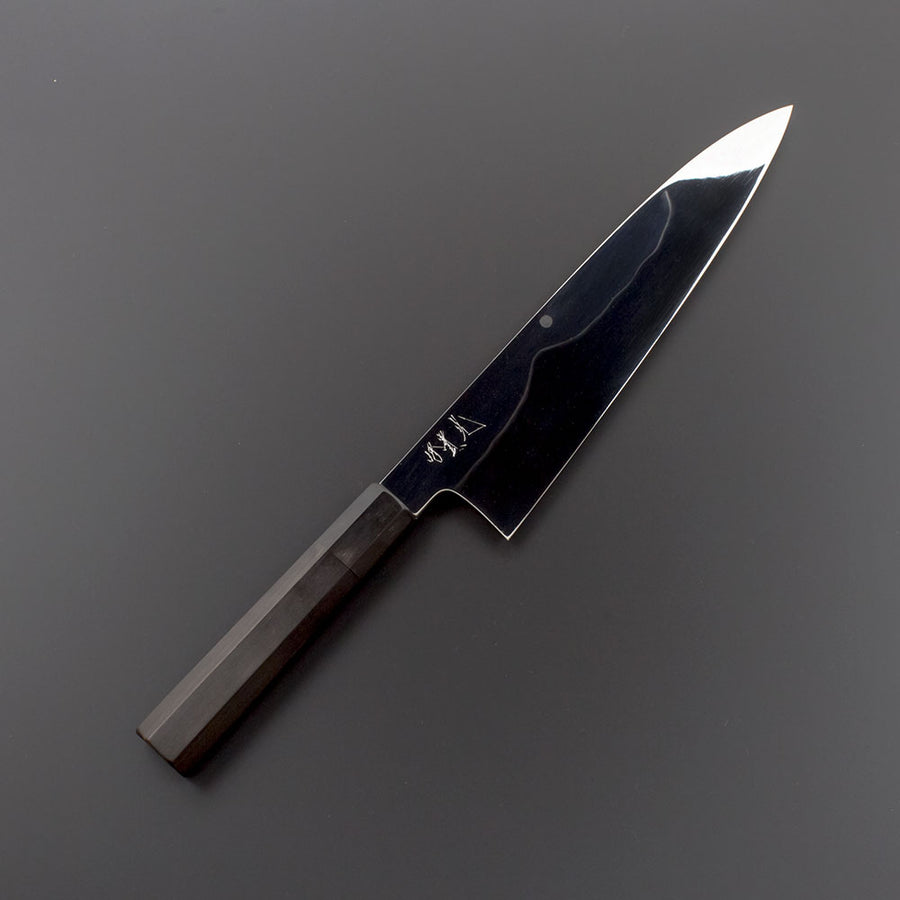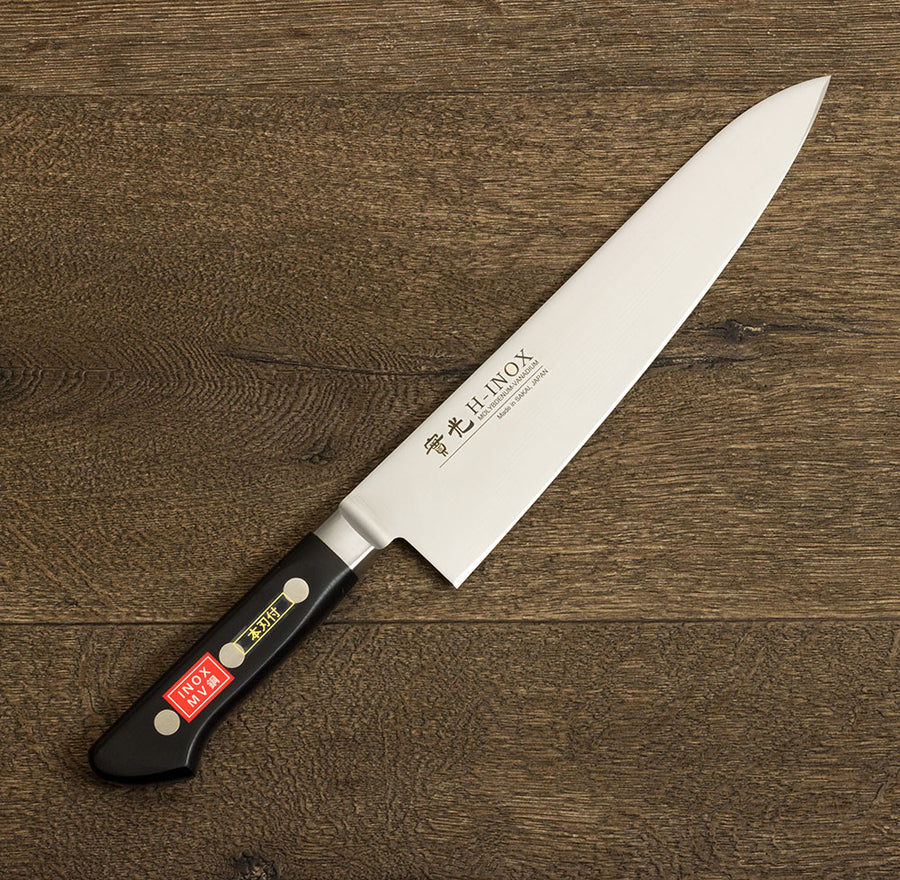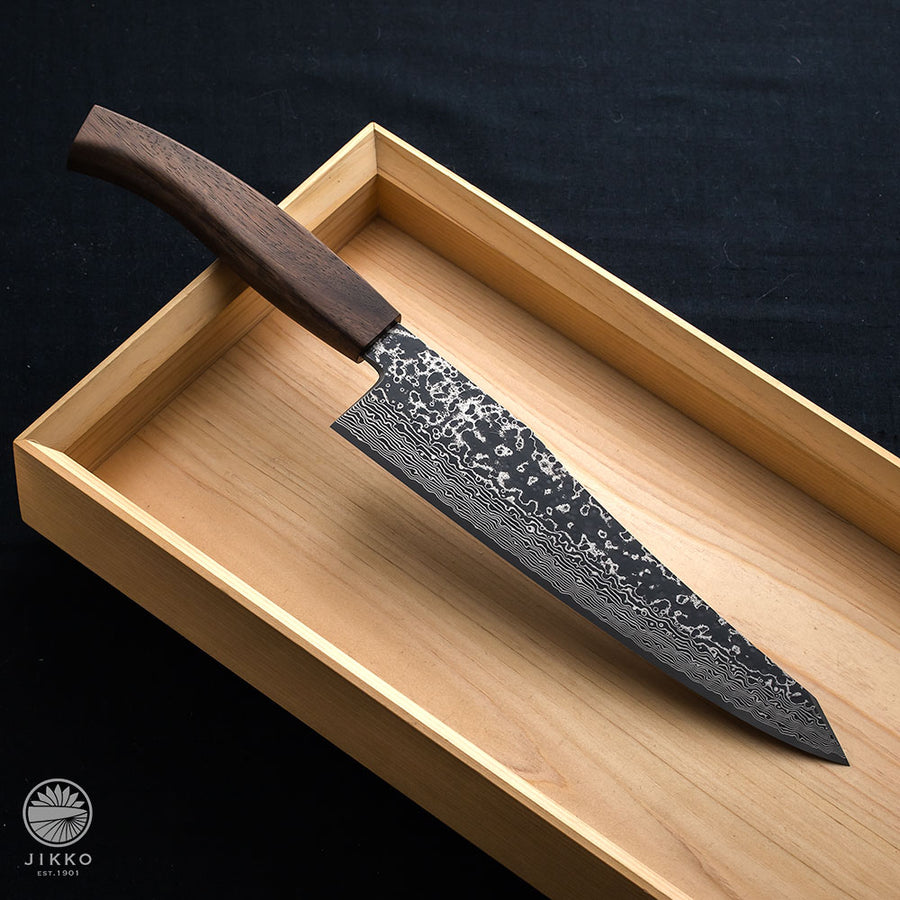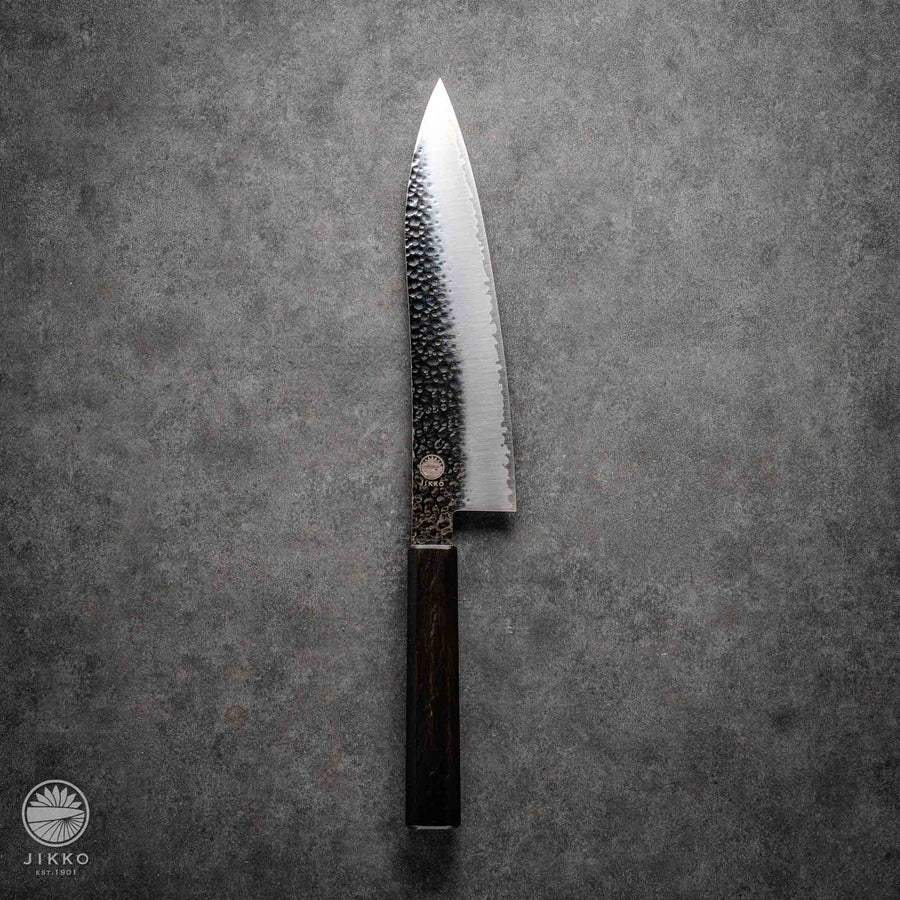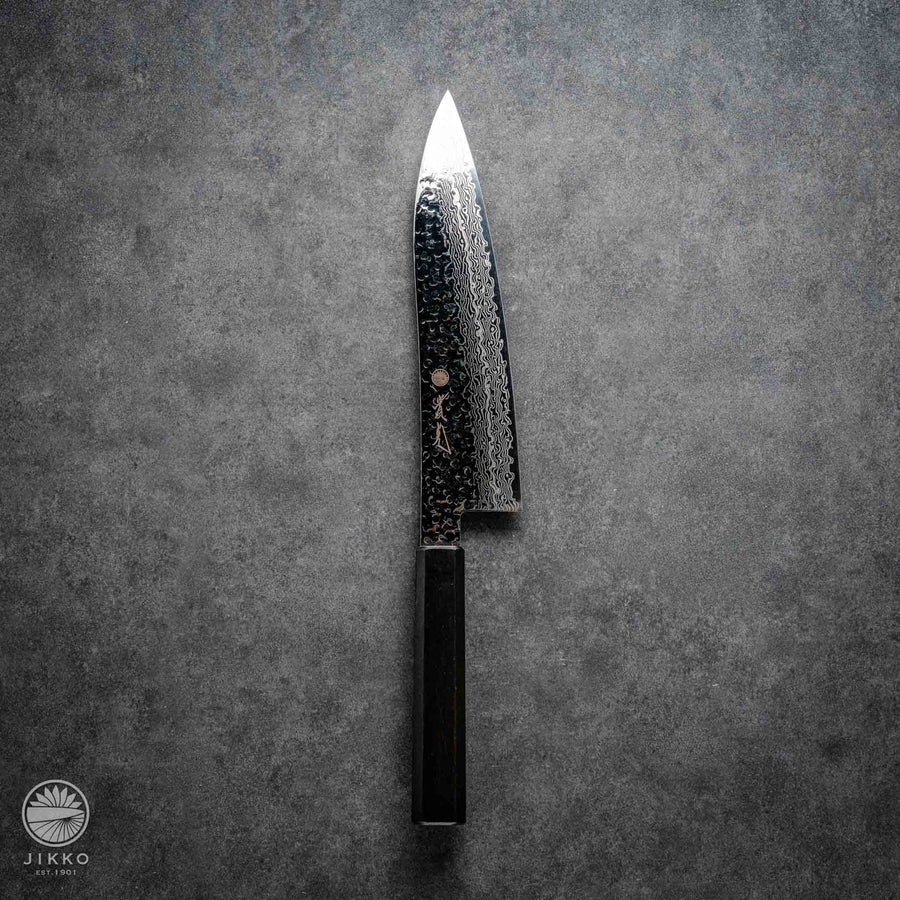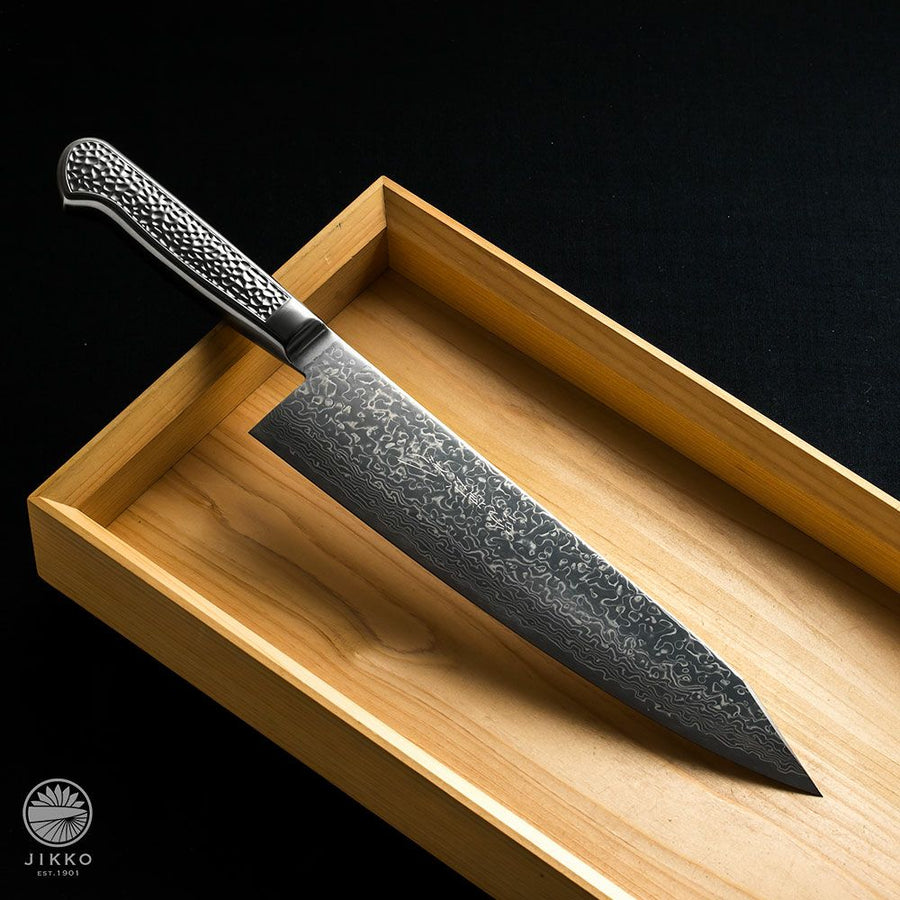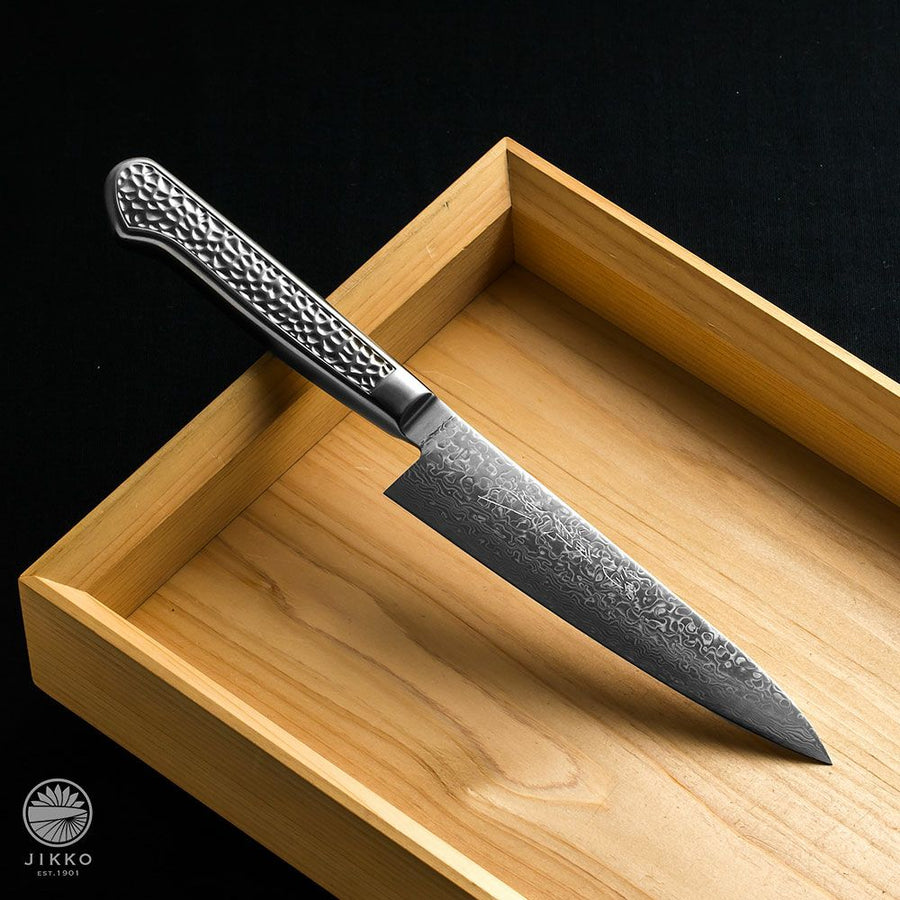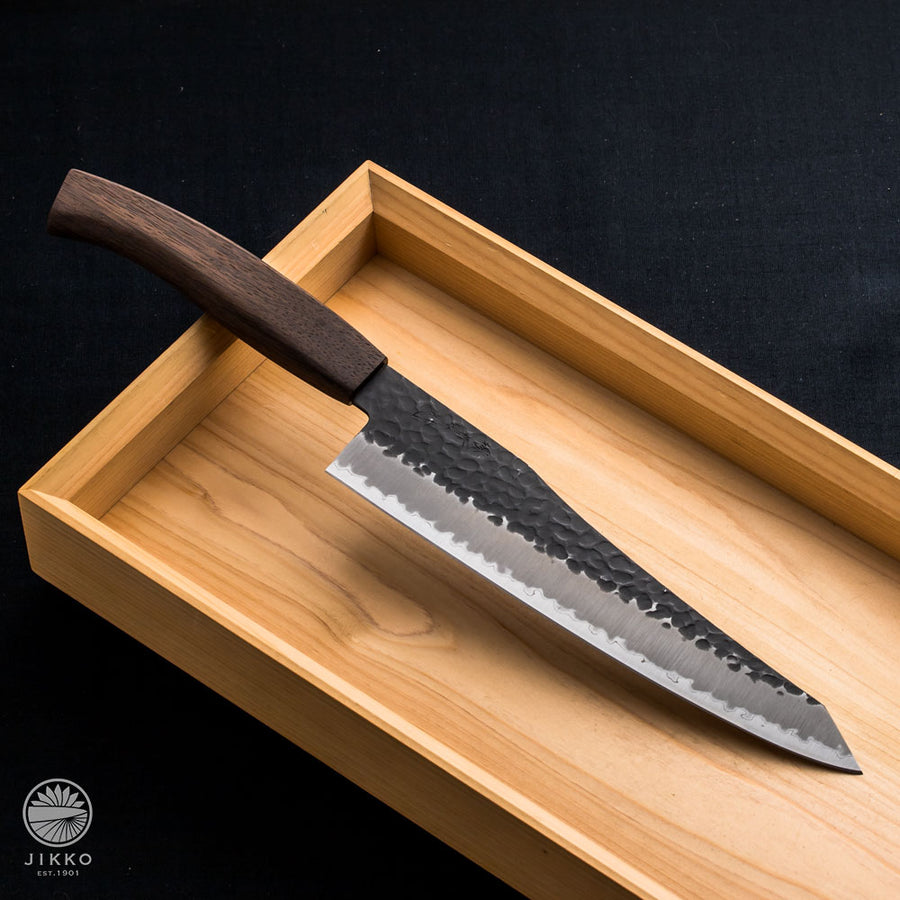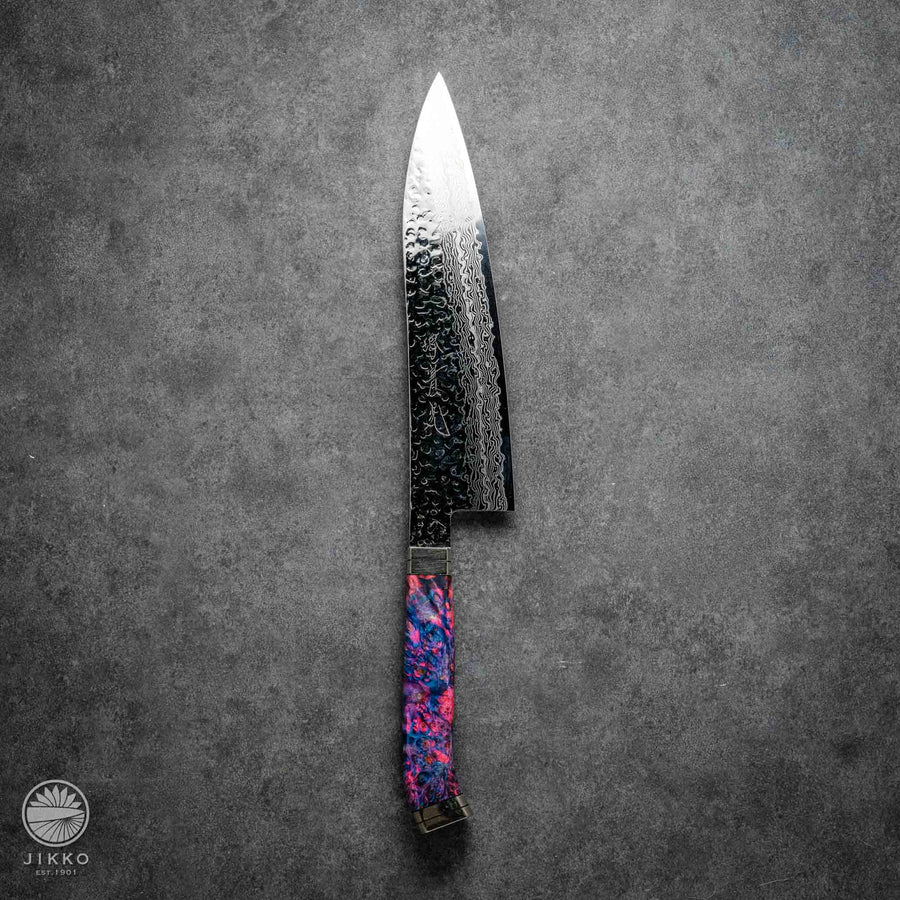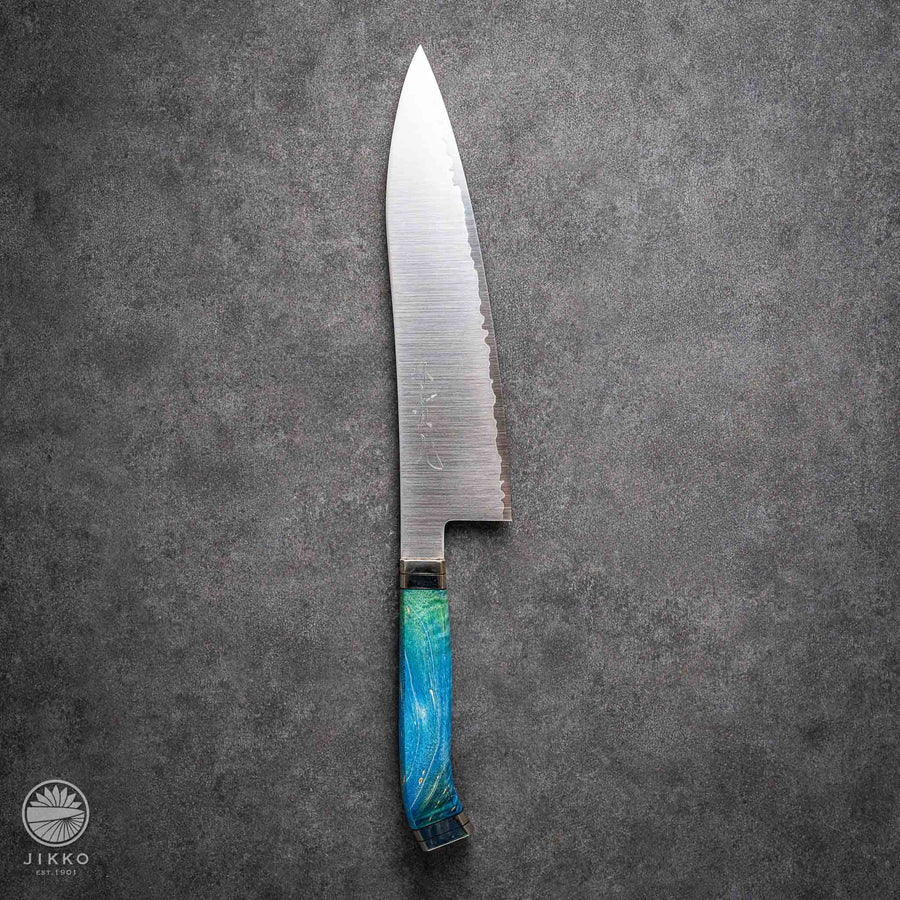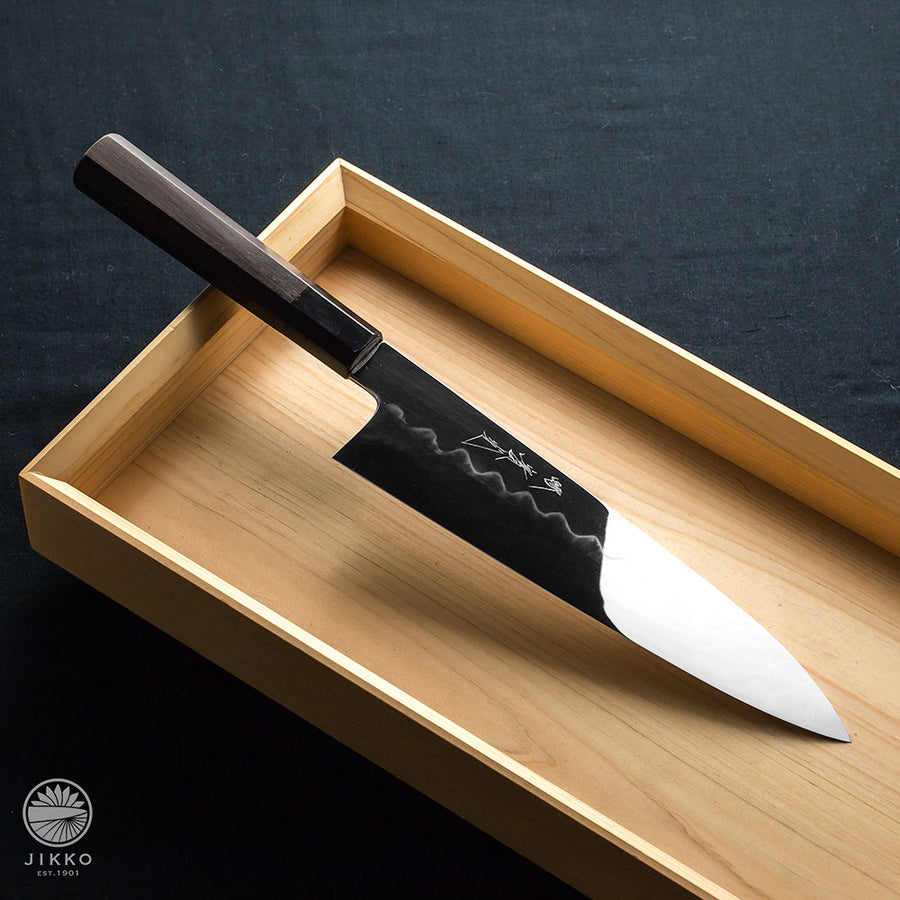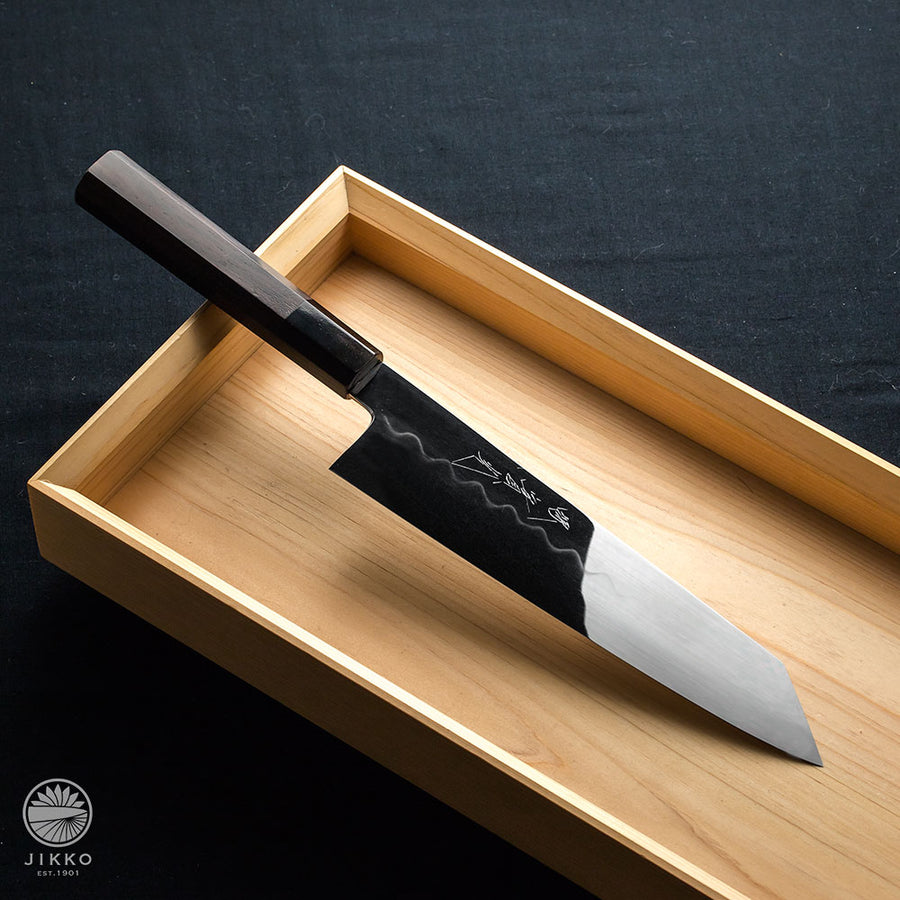The Gyuto knife is a Japanese chef’s knife designed for versatility. It can handle slicing, chopping, dicing, and mincing a wide variety of ingredients, including meat, vegetables, and fish.
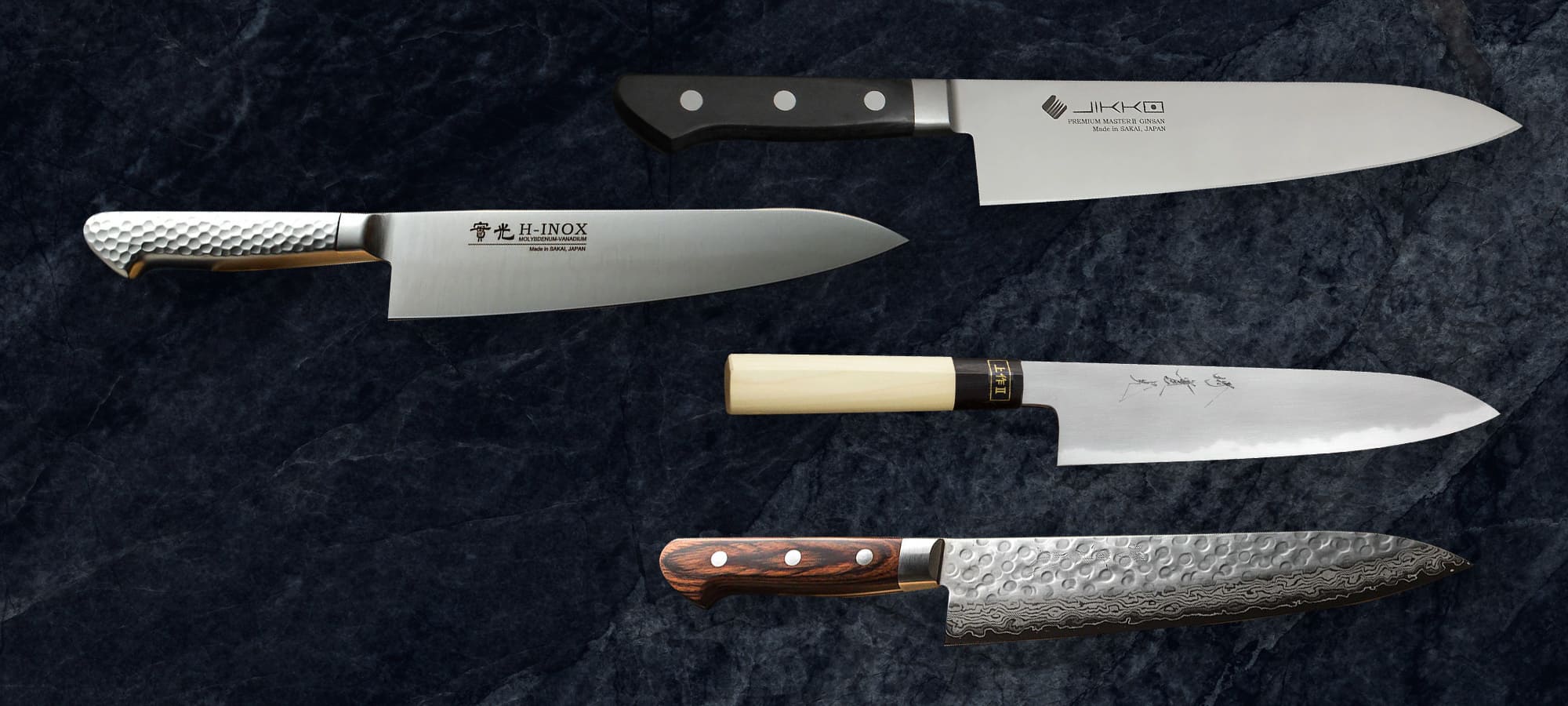
SakaiJIKKO We also have original single-edged chef's Chef knife with excellent sharpness. Here is a list of chef's Chef knife that can be purchased online from Jikko Hamono, a Sakai JIKKO cutlery online shopping with over 120 years of history.
MOVIE
Final Honing – “HA Ginsan” Kirituke Single-Bevel Gyuto Knife
Final Honing – “Ginza White” Kirituke Gyuto Knife (Ginza Finish)
Final Honing – “HA Ginsan” Kirituke Single-Bevel Gyuto Knife
Final Honing – “Gion Ginsan” Single-Bevel Gyuto / “Ginza White #2” Single-Bevel Gyuto
Frequently Asked Questions
Features and Uses of Gyuto Knives
The Gyuto is excellent for all-purpose cooking, from slicing meats and filleting fish to finely chopping vegetables, making it a staple in both professional and home kitchens.
Gyuto knives are typically lighter, thinner, and sharper than Western chef’s knives, allowing for more precise cuts. They also often feature harder steel, which maintains sharpness longer.
Yes, a Gyuto can replace multiple knives, including a Santoku, Petty, and carving knife. However, for very specialized tasks like filleting fish or deboning poultry, a dedicated knife may still be preferable.
Choosing the Right Gyuto Knife
The most common sizes range from 210mm to 240mm. A 210mm knife is ideal for home cooks, while 240mm is preferred by professional chefs for handling larger ingredients.
High-carbon steel offers superior sharpness and edge retention but requires more maintenance. Stainless steel is rust-resistant and easier to maintain.
Gyuto knives come with traditional Wa-handles (Japanese style) for a lightweight feel and Western-style handles for added grip and durability.
A stainless steel Gyuto knife with a 210mm blade is recommended for beginners due to its easy maintenance and versatility.
Using and Maintaining a Gyuto Knife
Use a rocking motion for chopping and a slicing motion for meat and fish. The thin blade is designed for precision rather than forceful chopping.
Wash and dry immediately after use. If using a high-carbon steel blade, apply a thin coat of oil to prevent rust. Store it properly to protect the edge.
Use a whetstone and maintain a consistent sharpening angle. Regular honing with a ceramic rod helps maintain sharpness.
Avoid cutting frozen food or bones, and use a softwood or rubber cutting board to reduce impact on the blade.
Alternative and Complementary Knives
While a Santoku or chef’s knife can serve as alternatives, the Gyuto’s versatility and balance make it an optimal choice for both home and professional kitchens.
A Petty knife is a great companion to a Gyuto, handling intricate work like peeling and small ingredient prep, while the Gyuto covers larger tasks.

